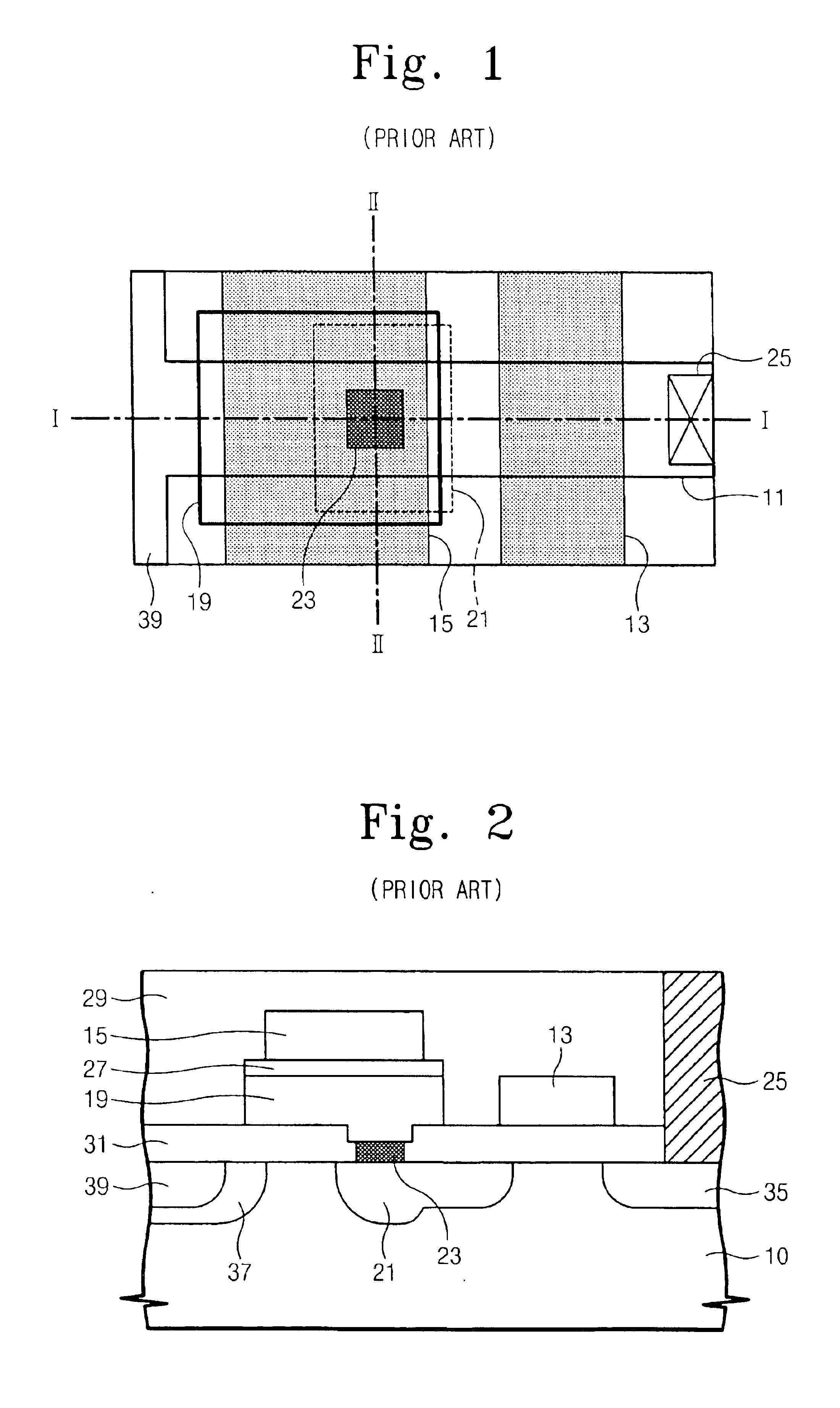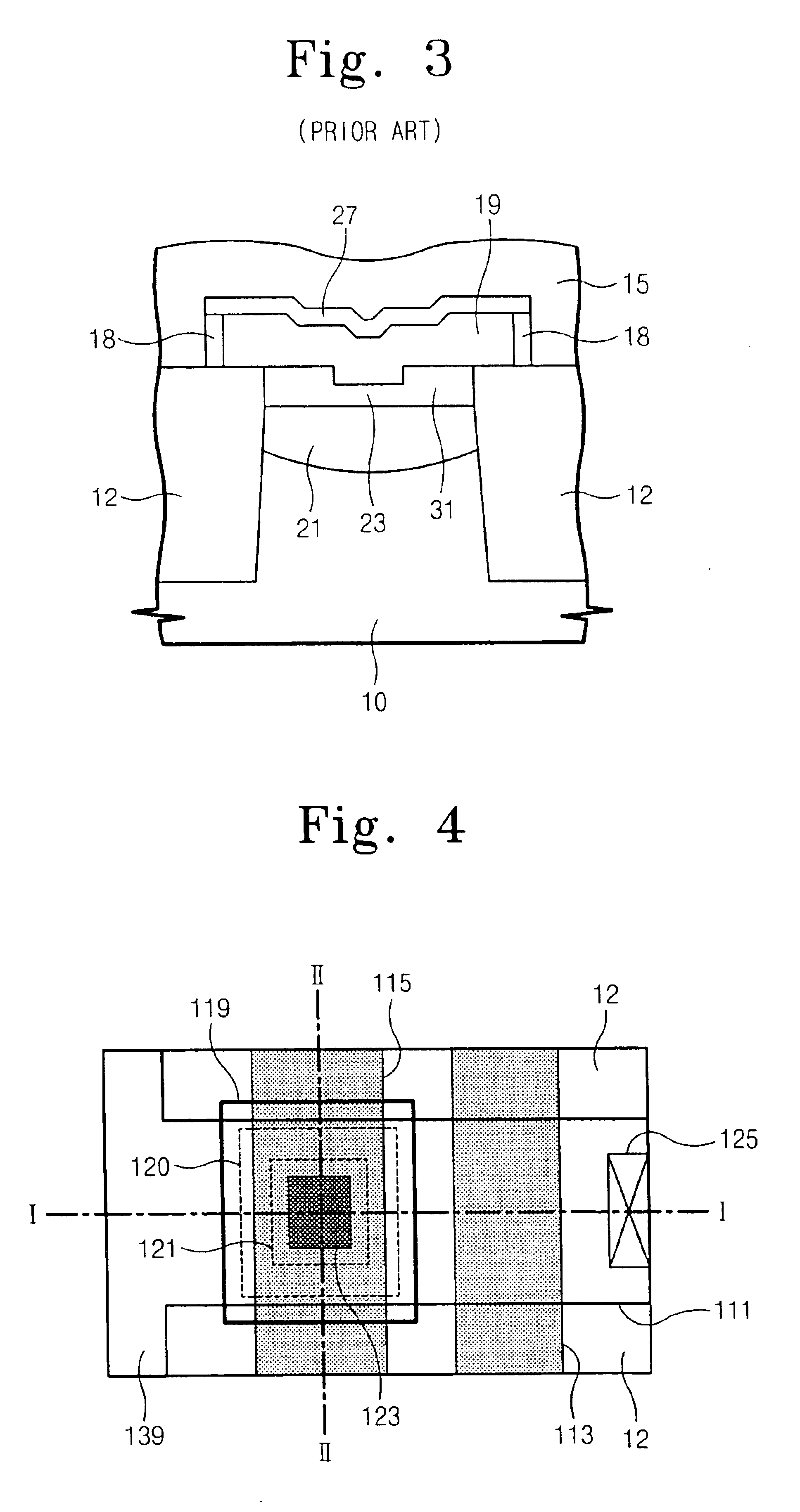EEPROM memory cell and method of forming the same
a memory cell and memory cell technology, applied in the field of eeprom memory cell structure, can solve the problems of inability to continuously increase the electric field of the insulation layer, the thickness of the dielectric layer cannot be continuously decreased, and the difficulty of widely forming the floating gate on the substrate, etc., to achieve the effect of reducing the area of the cell region and high integration of the semiconductor devi
- Summary
- Abstract
- Description
- Claims
- Application Information
AI Technical Summary
Benefits of technology
Problems solved by technology
Method used
Image
Examples
Embodiment Construction
[0025]FIG. 4 is a top plan view showing an EEPROM memory cell in accordance to a first embodiment of the present invention. FIGS. 5 and 6 are cross-sectional views taken along lines I—I and II—II of FIG. 4, respectively.
[0026]Referring to FIG. 4, a device isolation layer is formed to define an active region 111 in one direction. A common source line 139 is formed perpendicularly to the active region 111. A bit line contact 125 is formed at the active region 111. A sensing line 115 and a word line 113 are formed across the active region between the common source line 139 and the bit line contact 125. A trench 120 is formed at the active region 111 under the sensing line 115. Generally, an upper part of the trench 120 is formed wider than a bottom of the trench 20. A floating gate 119 is formed over the trench 120. The floating gate 119 is wider than the upper part of the trench 120 by a certain width to all directions. A tunneling insulation layer 123 is formed in the trench 120. The...
PUM
 Login to View More
Login to View More Abstract
Description
Claims
Application Information
 Login to View More
Login to View More - R&D
- Intellectual Property
- Life Sciences
- Materials
- Tech Scout
- Unparalleled Data Quality
- Higher Quality Content
- 60% Fewer Hallucinations
Browse by: Latest US Patents, China's latest patents, Technical Efficacy Thesaurus, Application Domain, Technology Topic, Popular Technical Reports.
© 2025 PatSnap. All rights reserved.Legal|Privacy policy|Modern Slavery Act Transparency Statement|Sitemap|About US| Contact US: help@patsnap.com



